
A cryptocurrency trading genius born in the 2000s in Shanghai now has a 7-digit monthly income and an 8-digit annual income. Not only is she beautiful with a positive outlook, but she is also very skilled. She is a representative of the new generation of post-2000s. She is also a good friend of mine in the cryptocurrency circle for many years. We met a while ago and talked about her glorious history. She spent 5 years learning and practicing in the cryptocurrency circle. She said that making money is too easy, and many people think too complicatedly. You only need to master the simplest K-line and make orders. Her winning rate is as high as 100%, and she is undefeated.
Through my own practice, the winning rate is as high as 100%. I have sorted it out in the past few days and now share it with those who are destined to learn and master it together.
These are the stages and time cycles of the bull and bear markets in the cryptocurrency market over the years: From the four stages of bear market - pre-bull market - bull market - big bull market, the cryptocurrency market has seen amazing growth in each time period, and the opportunities hidden therein are obvious!
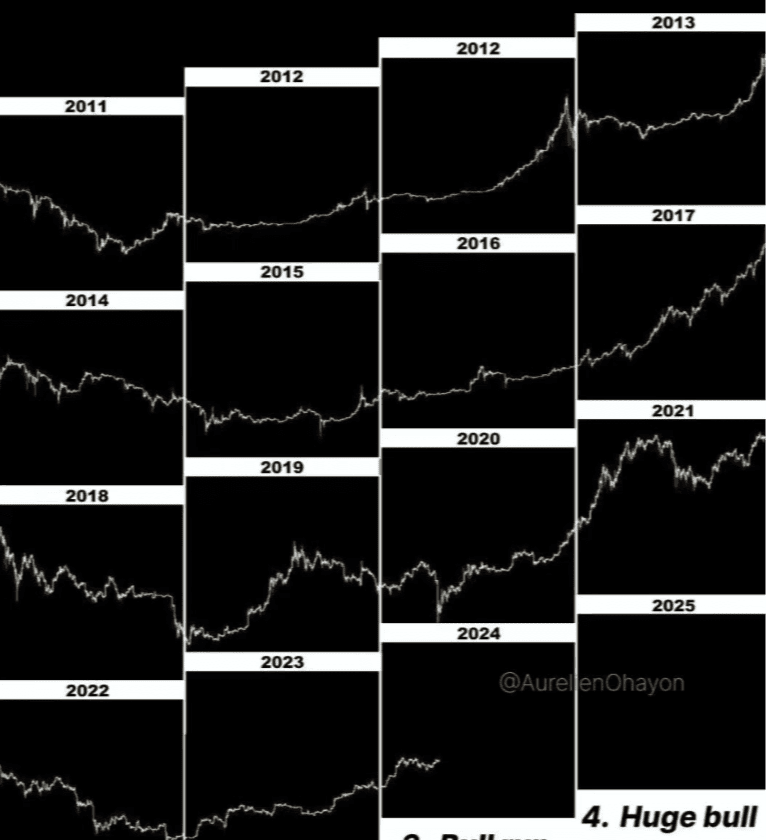
The cyclical nature of Bitcoin is very strong. Here is a picture of a man trying to find his sword on a boat.
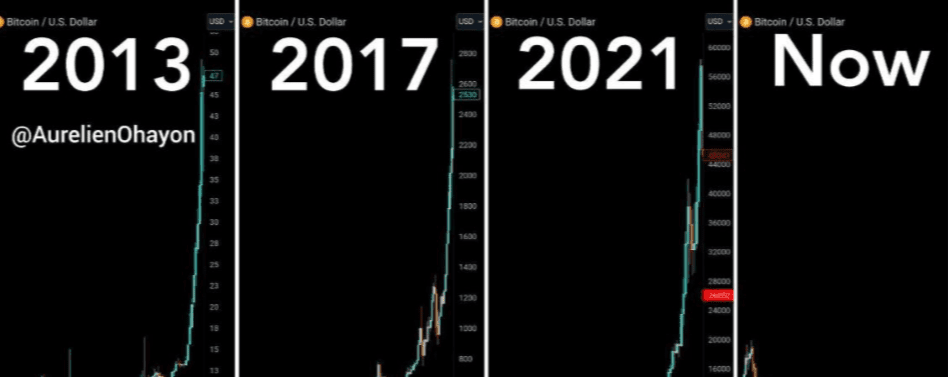
As shown in the above figure, the three halving cycles in history (2012, 2016, and 2020) have all led to huge bull runs.
The secret to a 7-digit monthly income and an 8-digit annual income is to master the K-line and make trades based on the patterns, with a winning rate of 100%.
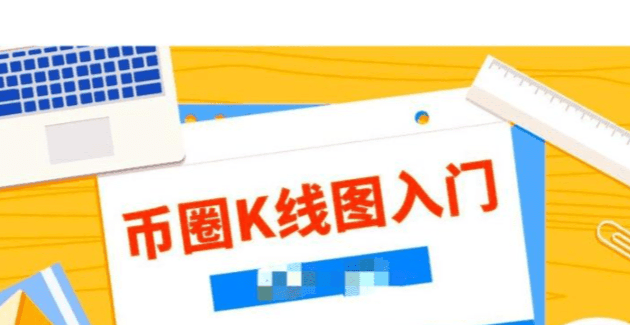
In the digital currency market, technical analysis is a very important indicator for predicting short-term market trends, which is often referred to as the K-line chart. Whether you believe in or advocate technical analysis, it is necessary to understand the K-line chart.
It is a taboo in the cryptocurrency circle not to understand the K-line and make random bets! Excluding technical issues such as technical graphics, indicators, and long-short games, the price trend, trading volume, lowest point, and highest point of a currency can all be reflected in the K-line chart.
What is K-line
K-line chart is a required course for entering all secondary markets. We call K-line chart candlestick chart. It originated in the Tokugawa Shogunate period of Japan and was invented by Homma Munehisa. It was first used to record the rice market. Later, it was introduced into the stock market and futures market because of its delicate and unique marking method. Through K-line chart, we can see the opening price, closing price, highest price, lowest price and other changes in the market within a certain period.
What is the use of looking at the K-line chart for me?
It can help you make better investment strategies and guide you to choose the best time to buy and sell. For believers who hoard coins, they also need to be able to understand it. The trading interfaces of major exchanges are occupied by K-line charts. If you can't understand it, you will be embarrassed to mix in the cryptocurrency circle.
What information can be obtained from looking at the K-line chart
Through the K-line chart, you can see the price trend of a specific period (30 minutes, 1 hour, 1 day, 1 week...), including the opening price, closing price, highest price, and lowest price. You can also see the fierce battle history between long and short positions.
Key Points
Composition of K-line chart
The main components of the K-line chart are two: the positive line and the negative line.
Each K-line represents four prices of the day: the highest price, the lowest price, the opening price and the closing price. The part between the opening price and the closing price is drawn as a "rectangular entity", and the highest price and the lowest price are connected, and the combination of the two forms a K-line.
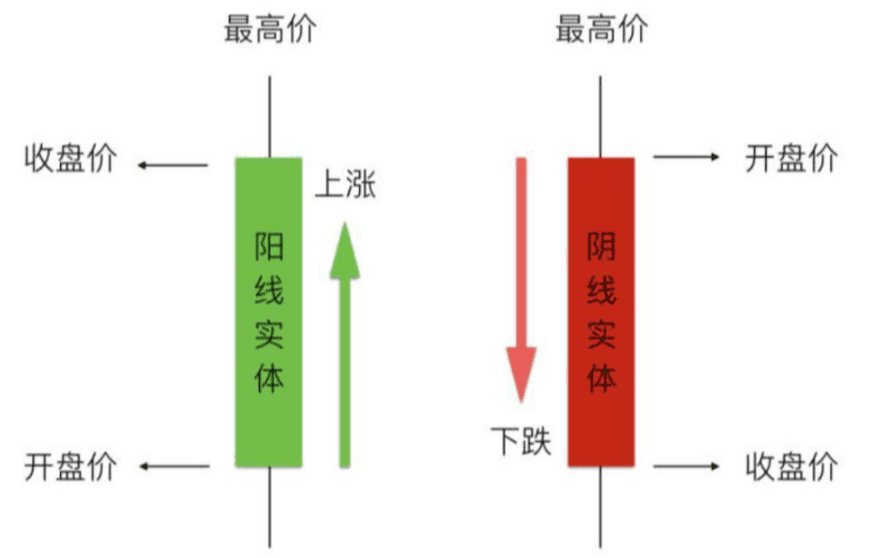
When the closing price is greater than the opening price, the bar is green and the price rises, which we call a positive line.
When the closing price is lower than the opening price, the bar is red and the price falls, which we call a negative line.
Most exchanges and analysis software in the cryptocurrency world use green to represent positive lines and red to represent negative lines. Generally speaking, positive lines represent longs (buys) and negative lines represent shorts (sells). Whichever side has stronger power will have a corresponding K line in the K line chart.
Take the daily chart as an example: if the buying power is greater than the selling power today, then today's K-line in the daily chart is a positive line (green column). On the contrary, if a negative line (red column) appears, it means that the selling power is stronger.
Note: In the Chinese stock market, the Yang line is red and the Yin line is green; in some graphs, the Yang line is a solid column and the Yin line is a hollow column.
What is a shadow line
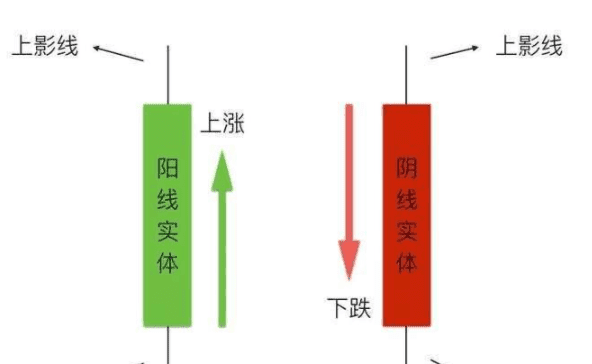
Shadows are thin lines above and below the column, indicating the difference between the highest and lowest prices and the closing price of the day. The longer the shadow, the greater the resistance. The longer the upper shadow, the greater the resistance to rising, and the longer the lower shadow, the greater the resistance to falling. Regardless of whether it is a negative or positive line, the straight line that protrudes upward from the column is collectively called the upper shadow, and the straight line that protrudes downward from the column is collectively called the lower shadow.
What is a long-short battle?
Bulls and bears are two legions, the bulls are represented by the green legion and the bears are represented by the red legion. The two sides have different views. The bulls believe that the price will rise, while the bears believe that the price will fall, so fights often occur. The bullish green legion is a group of people who are bullish on prices. They will buy and raise prices. The bearish red legion is a group of people who are bearish on prices. They will sell and cause prices to fall.
There will be a battle in each time period. If the red army on the short side wins, the price will fall and the K-line chart will show red. If the red side gains a huge advantage, it means that it is powerful and the entity shown on the K-line chart will be larger. If the green side has weak resistance, it means that the resistance it creates to the red side is too small and the shadow shown on the K-line chart will be very short.
Small Yang Star, Small Yin Star
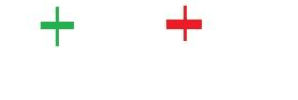
A. Little Yang Star:
It means that the price of Chinese currency fluctuates very little throughout the day, the opening price and closing price are extremely close, and the closing price is slightly higher than the opening price.
The appearance of a small Yang star indicates that the market is in a chaotic and unclear stage. It is impossible to predict whether the market will rise or fall in the future. At this time, we must make a comprehensive judgment based on the shape of the previous K-line combination and the price range at that time.
B. Small Yin Star:
The trend chart of the small Yin star is similar to that of the small Yang star, except that the closing price is slightly lower than the opening price. This indicates that the market is weak and the development direction is unclear.
Small Yang line, small Yin line

C. Small Yang line:
Its fluctuation range is larger than that of the Xiaoyang Star, and the bulls have a slight advantage, but the upward attack is weak, indicating that the market development is confusing.
D. Small Yinxian:
It means that the short side is suppressing the market, but the force is not strong.
Bald Yang line, Bald Yin line
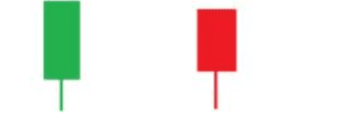
E. Bald Yang line:
① If the bald positive line appears in the low price area, it will be shown on the intraday chart that the price of the currency has bottomed out and then gradually increased, and the trading volume has increased at the same time, indicating the beginning of a round of rising market. This means that the price of the currency has shown a shrinking trading volume during the bottoming process. As the price of the currency gradually rises, the trading volume is evenly enlarged and finally closed with a positive line, indicating that the price of the currency will rise in the future. If it appears in the middle of an upward market, it indicates that the market outlook continues to be optimistic.
② If a hanging positive line appears in the high price area, the price of the currency may be pushed up by the main force to sell, so you need to pay attention.
F. Bald Yin line:
If this type of line appears in the low price zone, it means that the intervention of bargain hunting has caused the currency price to rebound, but the strength is not great.
Yang line with lower shadow, Yin line with lower shadow
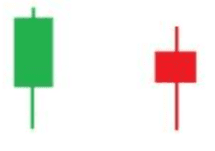
G. Yang candle with lower shadow:
Its appearance shows that the attack of the bulls and bears in the battle is steady and powerful, the currency price first falls and then rises, and the market has the potential to rise further.
H. Lower shadow line:
When it appears in the low price zone, it means that the lower level has strong support and the currency price may rebound.
Upper shadow Yang line, upper shadow Yin line
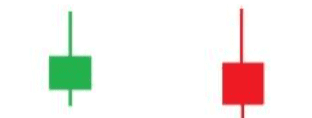
Ⅰ. Upper shadow bullish candlestick:
① It shows that the selling pressure from above is heavy when the bulls attack. This kind of pattern is often seen in the main force's test action, indicating that there are many floating chips at this time and the rising trend is not strong.
② Indicates that the bulls' upward attack was blocked and fell back, and the upper block selling pressure was heavy. It is unclear whether the upward trend can continue.
J. Upper shadow line:
When it appears in the high price zone, it means that there is severe selling pressure on the upper end, the market is weak, and the currency price may reverse and fall; if it appears on the rising path in the middle price zone, it indicates that there is still room for upward movement in the future.
Barefoot Yang line, Barefoot Yin line
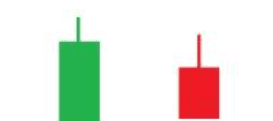
K. Barefoot Yang line:
It means that the upward momentum is very strong, but there are differences between the bulls and bears at high prices, so you should be cautious when buying.
L. Barefoot Yin line:
The appearance of the bare-footed Yin line indicates that although the price of the currency has rebounded, the selling pressure on the upper side is heavy. The short side took advantage of the situation to suppress the price of the currency and closed with a Yin line.
Piercing Yang Line, Piercing Yin Line

M. Piercing Bullish Line:
① The bulls have taken the upper hand and are seeing a wave of upward movement. The price of the currency is rising steadily with the support of trading volume, indicating a bullish outlook.
② Also for the piercing positive line, if the currency price trend shows that it is sideways or falling for most of the time and suddenly rises at the end of the market, it indicates that it may open high and then go low.
③ If the price trend shows a wide range of fluctuations throughout the day and then rises in volume at the end of the market to close with a positive sign, it may be that the main force of the day uses oscillation to wash the market and then easily pulls it up, and the market outlook may continue to be bullish.
N. Piercing Yin line:
Contrary to the above-mentioned piercing bullish candle situation, it indicates that there is a greater possibility that the currency price will fall.
Bald head and bare feet Yang line, bald head and bare feet Yin line
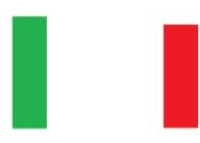
O. Bald and barefoot Yang line:
It shows that the bulls have firmly controlled the market, are attacking wave by wave, forcing out shorts step by step, and the rising trend is strong.
P.Bald head and bare feet Yin line:
The currency price was sideways, and suddenly fell in large volume at the end of the trading day, indicating that the bears finally took the dominant advantage in the battle, and the possibility of a low opening was high.
If the currency price goes through a wave of falling trends, it means that the bears have gained the upper hand and the bulls are unable to resist. The currency price is gradually driven down and the outlook is bleak.
T-shaped line, inverted T-shaped line

Q. T-type line:
When it appears in the low price zone, it means that the lower level has strong support and the currency price may rebound.
R. Inverted T-shaped line:
When it appears in the high price zone, it means that the selling pressure is serious, the market is weak, and the currency price may reverse and fall;
If it appears on the rising path in the mid-price zone, it indicates that there is still room for upward movement in the future.
Doji
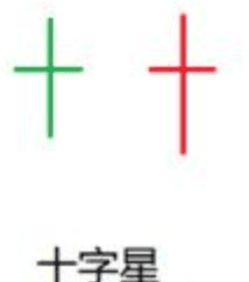
S. Doji:
This type of line is often called a changing cross star. Regardless of whether it appears in the high price zone or the low price zone, it can be regarded as a top or bottom signal, indicating that the general trend is about to change its original direction.
Summary of K-line types
In addition to the above 19 types of K-line, we can also classify K-line types according to the K-line's body and shadow. They can be mainly divided into 4 categories.
①: A K-line with only a real body but no upper or lower shadows is called a bald K-line.
It indicates that one of the buyers and sellers has the upper hand and becomes the master of market transactions.
②: Small Yin or Yang entities without upper and lower shadows.
The closing price is the highest or lowest price, and the opening price is the lowest or highest price. The fluctuations are limited, and the fight between buyers and sellers is not fierce. When the K-line is a positive line, the buyer has a slight advantage; when it is a negative line, the seller has a slight advantage. It usually appears when the currency price is sorted out and the currency price opens low or high. It is not very meaningful during the sorting period. When a large gap appears in the currency market, it is of great significance, indicating that one party has achieved a comprehensive victory and the other party has collapsed across the board.
③: A large bullish body without upper and lower shadows.
Most of them appear when the currency market is on the rise. The currency price continues to rise. Although there are pullbacks, they quickly resume their rise. Buyers are determined to push the currency price up.
④: A large black candlestick body without upper and lower shadows.
It mostly appears when the currency price is falling, which is exactly the opposite of the above meaning.
In the digital currency market, technical analysis is a very important indicator for predicting short-term market trends, which is often referred to as the K-line chart. Whether you believe in or advocate technical analysis, it is necessary to understand the K-line chart.
It is a taboo in the cryptocurrency circle not to understand the K-line and make random bets! Excluding technical issues such as technical graphics, indicators, and long-short games, the price trend, trading volume, lowest point, and highest point of a currency can all be reflected in the K-line chart.
K-line pattern
Relying on the K-line pattern to provide us with double protection and give us confidence
Trigger our transactions, so it is equally important to learn the K-line pattern
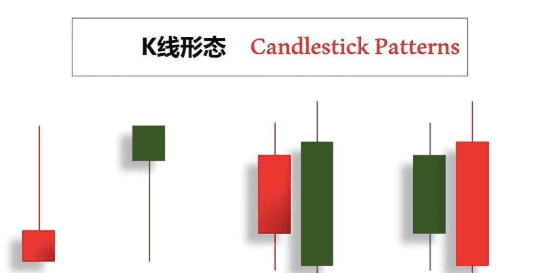
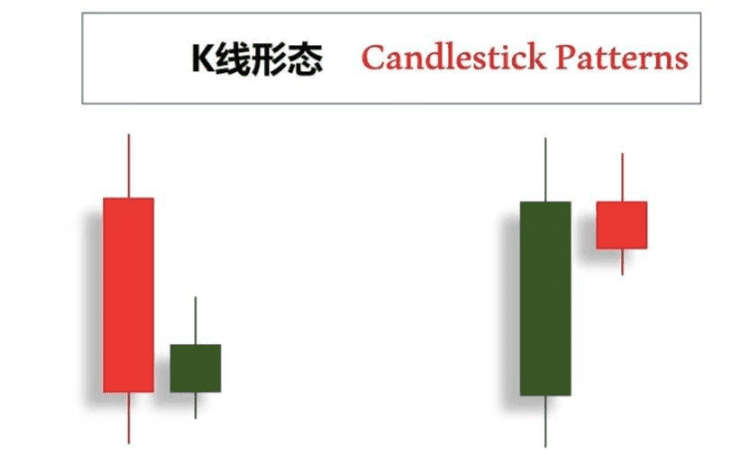
The bullish pregnancy line is composed of a Yin line and a very small Yang line. The Yang line, whether it is the body or the shadow, is within the previous K line.
The bearish harami is the opposite, the body and shadow of the negative line are both within the previous positive line
Generally speaking, there are two common ways to trade this pattern:
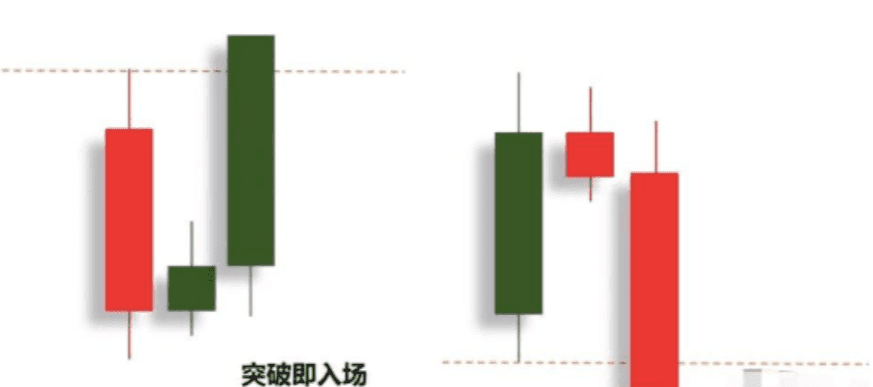
First, when the price breaks through the high or low of the previous K-line, no matter whether the latest K-line has ended or not, we will enter the market to buy or sell, which is a left-side transaction.
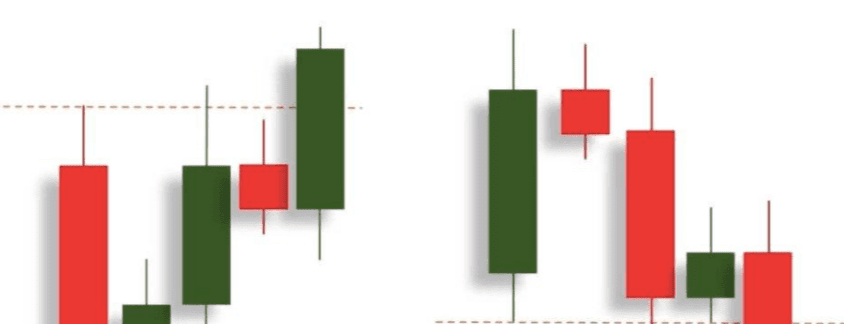
The second, more conservative approach is to wait for the current K-line to actually end at the high or low position of the previous K-line and stand firm to establish a direction before entering the market.
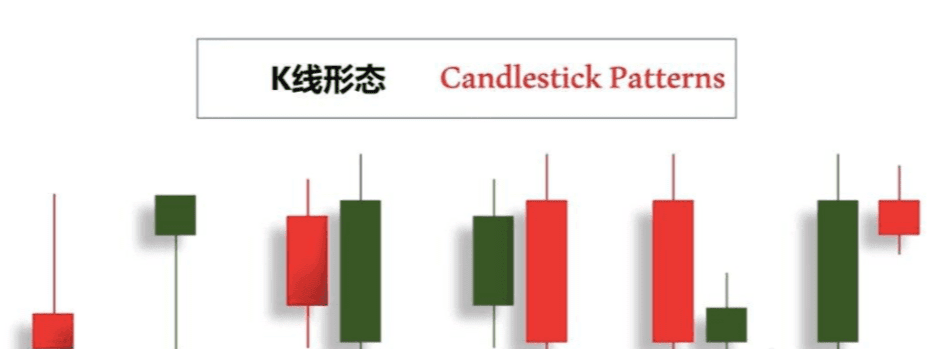
Part 3: Chart Patterns
You will find that the market will continue to do one thing through repeated patterns, and the chart pattern provides such a trace, so that we can follow the traces and find out what the market is doing at this moment and the logic behind it.
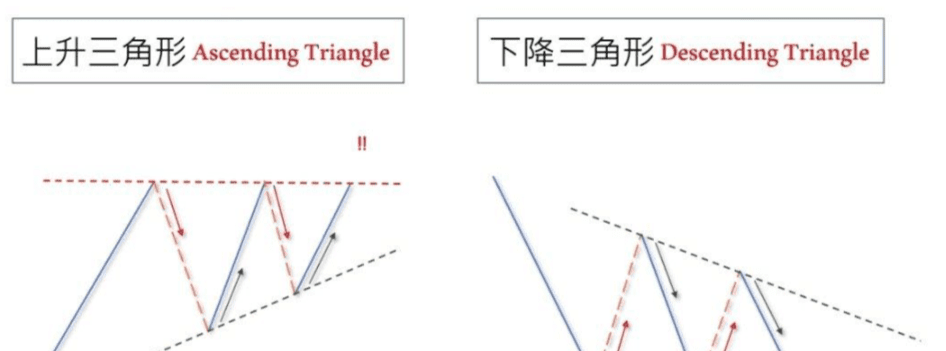
Chart patterns often seen on the market
Ascending Triangle
Descending Triangle
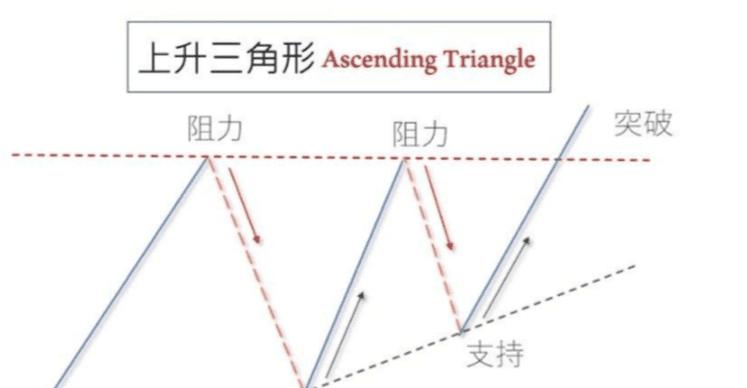
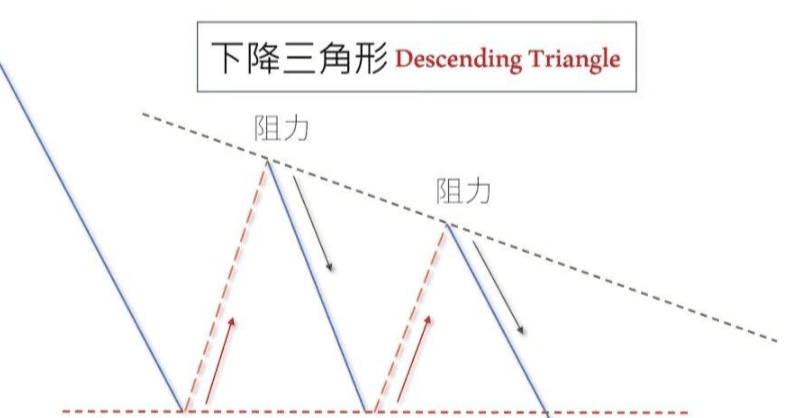
The same is true for the descending triangle. The impact of the horizontal support level on the price is smaller each time than the previous breakthrough. Finally, the breakthrough is successful and the downward trend continues.

In the long bear market, where will it end? Under the current market conditions, many people can no longer bear it. They are faced with two choices. The first is to stop moving forward and exit the cryptocurrency circle. The second is to hold on and wait for the next bull market to begin.
Only a small number of people can survive in a bear market. A bull market is like a vent, where even pigs can fly, while a bear market is a Shura field, where only the fittest survive. So how can one survive in a bear market?

Lock up your position, stay away from the currency market, and come back when the bull market comes. This rule requires a high level of human nature. There are very few people who can really ignore it, and those who can do it are not ordinary people.
Fixed investment reduces risk. Suitable for those who have small initial investment, relatively stable personal income, and will not have low future returns.
Pick the bottom when the time is right. This risk is also high enough. It is not easy for experts to buy at the bottom of the mountain. It is not easy for ordinary people to turn short-term into long-term, and long-term into shareholders.
Short-term operation, sell high and buy low. The risk is five stars, which is greater than the fourth one. If you do this method well, you will not be trapped in the bear market.
Cut losses, stay away from the currency market, and don't look at it anymore. The disadvantage of this rule is that if you sell at the end of a bear market and then a big bull market comes, you will regret it for the rest of your life. In order not to regret it for the rest of your life, this option is not recommended.
How should we invest and trade in a bear market?
1. Stick to a long-term investment plan that matches your financial goals
For investors, it is important to stick to long-term investment plans, whether in a bear market or a bull market. During a bear market, the Internet is full of pessimistic and pessimistic information, but it is best to ignore these market noises and focus on the returns of long-term investments. Some short-term traders will quickly change their investment strategies in order to protect funds or maximize returns, but the fact is that if you find yourself in a bear market, it may be too late to change your asset allocation.
2. Avoid timing your entry and exit
A common mistake retail investors make is to try to avoid the bear market by selling their positions. It may seem simple to exit at a high point and enter at a low point, but it is not easy. Even if you sell your position before a decline, you may not be able to catch the opportunity to enter the market again, because the market usually turns sharply upward when it is not optimistic. Looking back at history, most investors exit during a bear market, which prevents them from maximizing their asset returns.
Three: Don’t guess the bottom
In a bear market, investors often want to sell all their stocks at once, but selling in batches may be a better choice. Don't try to evaluate the timing of entry and exit. Relatively speaking, the average cost method (whether buying or selling) is more suitable.
4. Hoarding coins
Most of the chips on the market are very cheap. Accumulating cheap chips is the coins to be accumulated in the bear market, and the coins accumulated in the bear market are the chips to make money in the next bull market.
Five: Strengthen theoretical learning and tap into potential coins
Only by learning can we make continuous progress. This circle is changing with each passing day, projects are rising and falling, and technologies are constantly updated and iterated. If you don’t learn, you will only be eliminated. In this bear market, work hard to learn and accumulate as a bargaining chip for future struggles.
The above is the trading experience that Lao Bo shared with you today. Many times, you lose a lot of opportunities to make money because of your doubts. You dare not try, contact, and understand boldly. How can you know the pros and cons? Only when you take the first step, you will know how to take the next step. A cup of warm tea, a suggestion, I am both a teacher and a friend who is good at talking to you.
Meeting is fate, knowing each other is destiny. Lao Bo firmly believes that if we are destined to meet, we will meet each other even if we are thousands of miles apart, but if we are not destined to meet each other, it is fate. The road of investment is long, and the temporary gains and losses are just the tip of the iceberg. You must know that a wise man will make a mistake, and a fool will make a gain. No matter how you feel, time will not stop because of you. Pick up the boredom in your heart, stand up again and get ready to move forward.
Again, if you don’t know what to do in a bull market, click on Lao Bo’s avatar and follow him. Bull market spot planning and contract passwords will be shared for free.